Spring is here. Waiting through the winter, spring is always so inspirational. Green grass, rain showers, and sunshine! The promise of lazy warm summer days ahead. Of course, then there is the reality..... Spring in northern Idaho hits fast and hard. Everything goes at once and it does so with rain. Long, day after day of gray, wet days. Then the grass is suddenly a foot long, weeds pop up every where and it's too wet to do anything :-) I've been eying the weather report for a week now. A short, blissful morning of sun has been forecast for Wednesday. I have been wanting to get into the hive for a while and now, my chance! I carved out a few hours from work this morning and recruited Kara to help. Great volunteer and photographer! Thank you Kara!
Oh, and just in case you're wondering, the sun didn't last ... we're now under a winter storm warning :-P .
.
.
.
Oh, and just in case you're wondering, the sun didn't last ... we're now under a winter storm warning :-P .
.
.
.
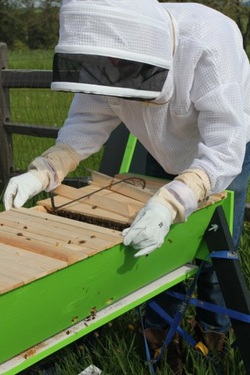
We started off by peeking in the window to see where the active comb building has stopped. Then I gingerly start prying out the bars. The bees do not like gaps in the hive and they plug them with propolis, a bee glue of sorts collected from tree resins. The bars are attached with this. I picked up a nice hand crafted tool for prying up the bars from Backyard Hives in Boulder. I try to work slowly, even though I am excited. The bees were very calm, more than one would expect seeing that their home is being broken open. A few guard bees angrily buzz out, but I simply stop and wait and they calm down.
I open only a little at a time, pulling out a bar, inspecting it, then replacing it sliding it towards me. This way I can move through the hive like a filing cabinet and also close it up quickly if the ladies get out of hand. They did not, however, so we continued.
I open only a little at a time, pulling out a bar, inspecting it, then replacing it sliding it towards me. This way I can move through the hive like a filing cabinet and also close it up quickly if the ladies get out of hand. They did not, however, so we continued.
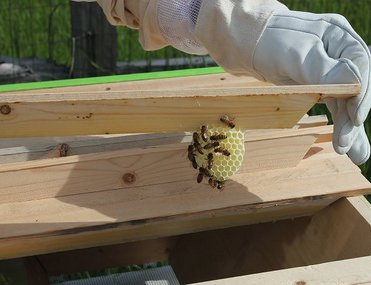
The first bar we check out has a small comb on it. This is new and was on the next bar over from the small comb I showed earlier. That comb is now much bigger, but not yet full size.
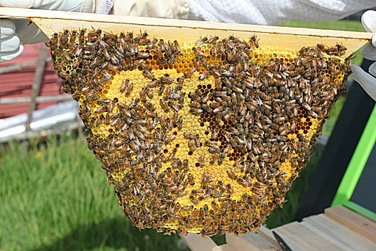
About three bars in we got to the first full sized comb. As you can see, the girls were busy here. The capped cells (lighter color) are worker brood pupae. Where the bees are is probably uncapped cells with larvae that they are feeding. Both sides of the comb looked similar to this.
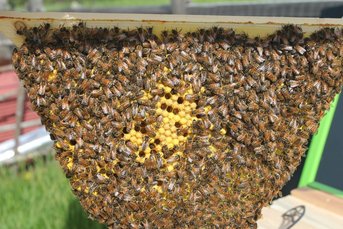
Further in, another full comb. This one has puffier capped cells that look like pencil erasers. These are drone cells for the males bees. These arise when the queen lays an unfertilized egg. It is normal to produce these and says they are planning ahead to when drones may be required.
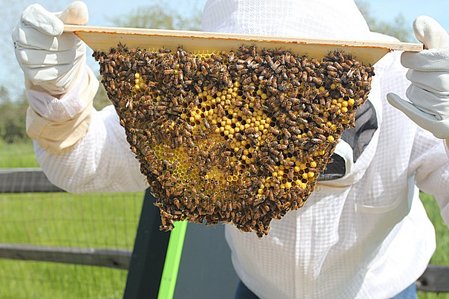
This is a mixed brood comb, with both worker and drone cells. There are several uncapped cells too. The combs serve many purposes, from rearing to storage to physical support.
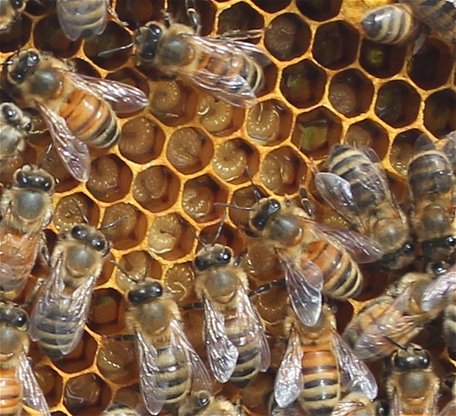
The little grub like critters in these uncapped cells are larvae, fairly well developed. They will eventually pupate and the workers will cover or cap their cells.
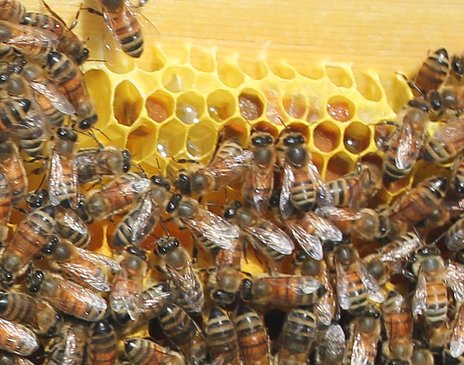
There were also some pollen storage cells, the peanut buttery stuff shown here. These were mostly towards the tops of the bars. I did not see a lot of nectar storage (eventual honey), but this is not unexpected given we haven't had a lot of flowering yet.
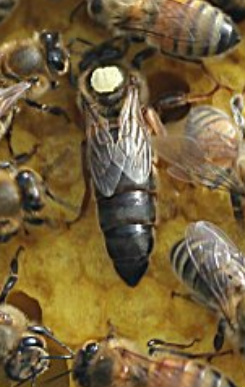
And then there was the queen. I was glad to find her (Kara actually saw her first). She is much larger and black. She was marked before the package shipped, which is the white dot on her back. This helps in spotting her in the mass of bees. She appeared to be healthy and, given the amount of brood present, she's been busy laying eggs!
All hail the Queen!
All hail the Queen!
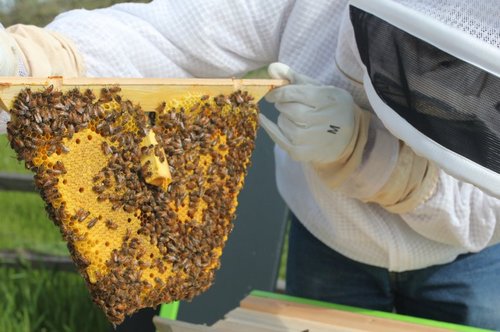
Finally, towards the beginning of the combs, we found the queen cage. I never got the chance to remove it and so they built around it. Not really a problem. Some advocate cutting it out, but I left it in. It should not cause any problems.
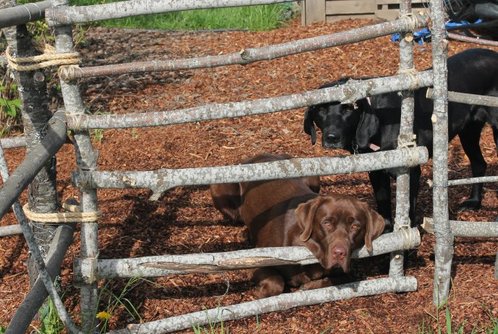
Oh, and there was a spectator gallery too. Griz and Meadow didn't want to be left out and really wanted in the bee yard. They were good though and just watched patiently.
Now we just continue watching. The apple trees are about to bust out in bloom and other flowering plants are ready to go too. This will probably be one of the last big winter storms we get, so I am hopeful the bees will have plenty to work on soon.
Now we just continue watching. The apple trees are about to bust out in bloom and other flowering plants are ready to go too. This will probably be one of the last big winter storms we get, so I am hopeful the bees will have plenty to work on soon.
 RSS Feed
RSS Feed